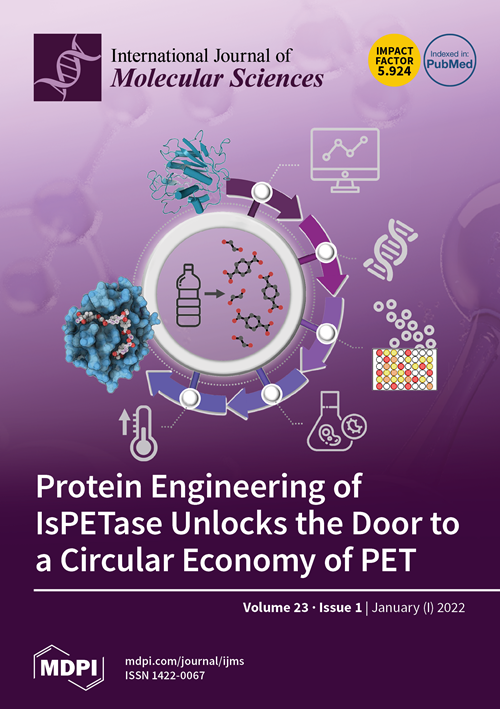利用传统磁共振成像开发胶质母细胞瘤 MGMT Promoter 甲基化检测的放射原子模型
IF 4.9
2区 生物学
Q1 BIOCHEMISTRY & MOLECULAR BIOLOGY
引用次数: 0
摘要
O6-甲基鸟嘌呤-DNA 甲基转移酶(MGMT)启动子的甲基化是胶质母细胞瘤(GB)患者对化疗反应较好的相关分子标记。标准的术前磁共振成像(MRI)分析不足以检测 MGMT 启动子甲基化。本研究旨在评估使用多参数磁共振成像技术从多个肿瘤亚区提取的放射学特征能否预测胶质母细胞瘤患者的MGMT启动子甲基化状态。这项回顾性单机构研究纳入了277例GB患者,他们的三维对比后T1加权图像和三维流体增强反转恢复(FLAIR)图像是用两台核磁共振扫描仪采集的。对每位患者手动分割出三个独立的感兴趣区(ROI),分别显示肿瘤强化、坏死和 FLAIR 高密度。根据一组自动选择的放射学特征,在有和没有人口统计学变量(即患者的年龄和性别)的情况下,建立了两种机器学习算法(支持向量机(SVM)和随机森林),用于从训练组(196 名患者)中预测 MGMT 启动子甲基化,并在单独的验证组(81 名患者)中进行测试。在训练集中,基于三个独立 ROI 所选放射学特征的 SVM 取得了最好的成绩,准确率平均为 83.0%(标准偏差:5.7%),通过交叉验证计算的曲线下面积(AUC)为 0.894(0.056)。在测试集中,所有分类性能都有所下降:最好的是基于从通过合并三个 ROI 构建的整个肿瘤病灶中提取的选定特征的 SVM,准确率为 64.2%(95% 置信区间:52.8-74.6%),AUC 为 0.572(0.439-0.705)。将患者的年龄和性别与放射学特征一起纳入模型后,结果没有变化。我们的研究证实了成像特征与 MGMT 启动子甲基化状态之间存在微妙的联系。然而,这种关联的强度还需要进一步验证,因为在这个验证队列中获得的诊断性能较低,不足以进行有临床意义的预测。本文章由计算机程序翻译,如有差异,请以英文原文为准。
Development of A Radiomic Model for MGMT Promoter Methylation Detection in Glioblastoma Using Conventional MRI
The methylation of the O6-methylguanine-DNA methyltransferase (MGMT) promoter is a molecular marker associated with a better response to chemotherapy in patients with glioblastoma (GB). Standard pre-operative magnetic resonance imaging (MRI) analysis is not adequate to detect MGMT promoter methylation. This study aims to evaluate whether the radiomic features extracted from multiple tumor subregions using multiparametric MRI can predict MGMT promoter methylation status in GB patients. This retrospective single-institution study included a cohort of 277 GB patients whose 3D post-contrast T1-weighted images and 3D fluid-attenuated inversion recovery (FLAIR) images were acquired using two MRI scanners. Three separate regions of interest (ROIs) showing tumor enhancement, necrosis, and FLAIR hyperintensities were manually segmented for each patient. Two machine learning algorithms (support vector machine (SVM) and random forest) were built for MGMT promoter methylation prediction from a training cohort (196 patients) and tested on a separate validation cohort (81 patients), based on a set of automatically selected radiomic features, with and without demographic variables (i.e., patients’ age and sex). In the training set, SVM based on the selected radiomic features of the three separate ROIs achieved the best performances, with an average of 83.0% (standard deviation: 5.7%) for accuracy and 0.894 (0.056) for the area under the curve (AUC) computed through cross-validation. In the test set, all classification performances dropped: the best was obtained by SVM based on the selected features extracted from the whole tumor lesion constructed by merging the three ROIs, with 64.2% (95% confidence interval: 52.8–74.6%) accuracy and 0.572 (0.439–0.705) for AUC. The performances did not change when the patients’ age and sex were included with the radiomic features into the models. Our study confirms the presence of a subtle association between imaging characteristics and MGMT promoter methylation status. However, further verification of the strength of this association is needed, as the low diagnostic performance obtained in this validation cohort is not sufficiently robust to allow clinically meaningful predictions.
求助全文
通过发布文献求助,成功后即可免费获取论文全文。
去求助
来源期刊

International Journal of Molecular Sciences
Chemistry-Organic Chemistry
CiteScore
8.10
自引率
10.70%
发文量
13472
审稿时长
17.49 days
期刊介绍:
The International Journal of Molecular Sciences (ISSN 1422-0067) provides an advanced forum for chemistry, molecular physics (chemical physics and physical chemistry) and molecular biology. It publishes research articles, reviews, communications and short notes. Our aim is to encourage scientists to publish their theoretical and experimental results in as much detail as possible. Therefore, there is no restriction on the length of the papers or the number of electronics supplementary files. For articles with computational results, the full experimental details must be provided so that the results can be reproduced. Electronic files regarding the full details of the calculation and experimental procedure, if unable to be published in a normal way, can be deposited as supplementary material (including animated pictures, videos, interactive Excel sheets, software executables and others).
 求助内容:
求助内容: 应助结果提醒方式:
应助结果提醒方式:


